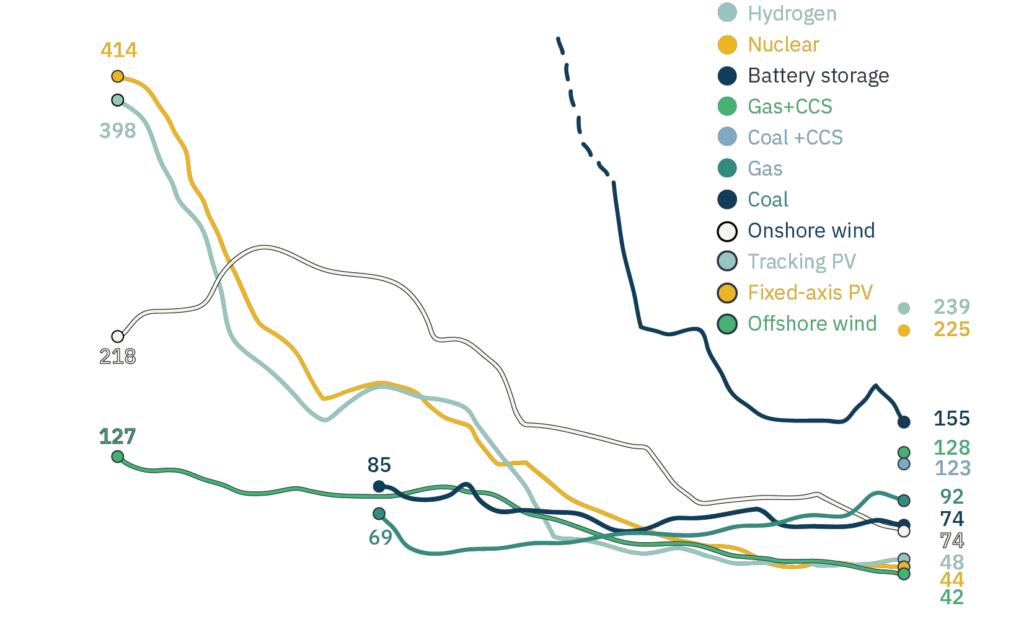In the first two parts of this series, the urgency of tackling the climate crisis was made apparent and the key drivers and players in the journey to achieving net zero mapped out alongside the challenges which must be considered.
As stewards of our world, it’s our responsibility to support green energy technologies. These technologies are central to the transition, providing practical solutions to cut emissions. The shift to renewables offers a more sustainable way to meet energy needs for the long term, fostering a strong future for generations to come.
Critical role of the power sector
The electricity sector is central to cost-effective decarbonisation of the broader economy through electrification and provision of carbon-free power. Integrating very high levels of variable renewable energy will require expanded, modernised, and flexible grid infrastructure along with large-scale storage.
Market design reforms and dependable revenue mechanisms[i] are increasingly the driving forces behind grid investments, ensuring both reliability and future-readiness. Investing in the grid is not just about keeping the lights on; it’s about laying the groundwork for a renewable energy future. A state-of-the-art grid is equipped to manage the fluctuations inherent in renewable energy sources like solar and wind, offering enhanced resilience against outages. Efficient approval processes and well-planned locations are key for the quick roll-out of renewable energy sources and the necessary infrastructure, such as transmission lines.
Renewable energy – The necessary backbone
Renewable energy, especially solar, wind and storage technologies, will form the backbone of a net zero future. These options can scale rapidly while delivering cost-effective emission reductions. Since 2010, solar and wind costs have plunged by 90% and 70% respectively[ii]. Costs will continue falling as technology improves.
Global levelised cost of electricity benchmarks, 2009 – 2023 $/MWh (real 2022)

The International Energy Agency projects renewables will supply over 60% of global electricity by 2030, rising to over 90% by 2050[iv]. Widespread electrification of transport, buildings and industry coupled with abundant clean power will sharply reduce fossil fuel demand.
The time for action is now
The renewable energy transition offers solutions to the climate crisis while enabling sustainable economic growth. Key technologies like solar, wind, and battery storage are ready to scale rapidly. But only bold, immediate, and coordinated action across all levels of government and society can bring us closer to reaching net zero greenhouse gas emissions globally before 2050. The decisions we make collectively in this crucial decade will define our future.
Overall, the climate science is clear – we need to achieve net zero emissions globally by mid-century to mitigate atmospheric degradation for the well-being of future generations. The technology pathways are in place—renewables, electrification, and storage can phase out fossil fuel use. Now, a blend of leadership, unprecedented cooperation is essential from policymakers, corporations, and the public. While all sectors must collaborate, the injection of private capital could serve as a catalyst, speeding up innovation, scaling solutions, and leveraging public efforts. Together, immediate action is needed to navigate this transition successfully.
[i] Market design reforms and dependable revenue mechanisms
[ii] Since 2010, solar and wind costs have plunged by 90% and 70% respectively
[iii] https://about.bnef.com/blog/cost-of-clean-energy-technologies-drop-as-expensive-debt-offset-by-cooling-commodity-prices/
[iv] renewables will supply over 60% of global electricity by 2030, rising to over 90% by 2050


